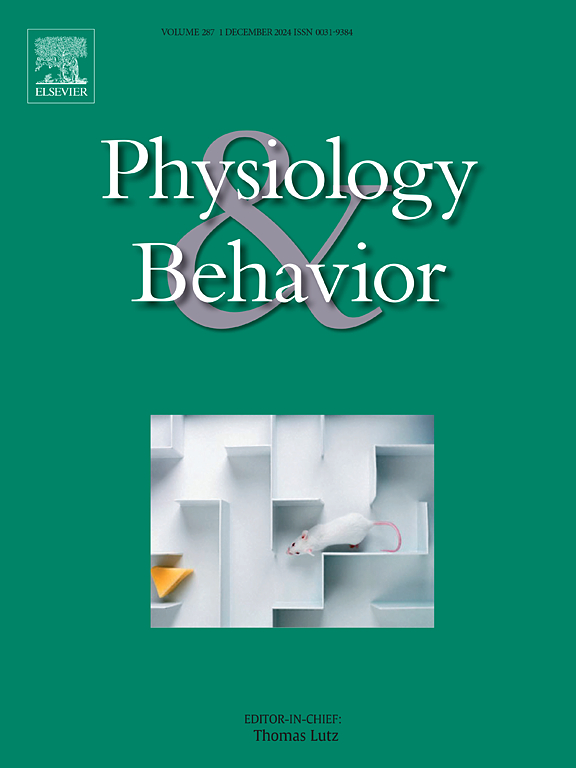Impact of triglyceride glucose - Body mass index on depression risk in Chinese middle-aged and elderly adults: Evidence from a large-scale study
IF 2.5
3区 医学
Q2 BEHAVIORAL SCIENCES
引用次数: 0
Abstract
Background
Current literature lacks evidence to characterize the relationship between the triglyceride glucose - body mass index (TyG-BMI) and depression. Therefore, this study aimed to elucidate the potential association between TyG-BMI and depression risk in a Chinese middle-aged and elderly population.
Methods
The study utilized data from the China Health and Retirement Longitudinal Study (CHARLS) conducted in 2011, which included 17,708 participants. We used multifactorial logistic regression modeling to investigate the relationship between TyG-BMI and depression in Chinese adults, using smoothed curve fitting to assess the nonlinear relationship between them. In addition, we performed sensitivity and subgroup analyses to verify the robustness of the results.
Results
A total of 9328 participants were included in our study, After adjusting for all potential covariates, participants with higher levels of TyG-BMI had a lower risk of depression compared to Q1, the adjusted OR (95 % CI) values were Q2 (OR: 0.84, 95 % CI: 0.74–0.96, p = 0.009), Q3 (OR: 0.75, 95 % CI: 0.65–0.86, p < 0.001), and Q4 (OR: 0.67, 95 % CI: 0.57–0.79, p < 0.001). The association between TyG-BMI and depression exhibited an L-shaped curve (nonlinear, p = 0.004). When TyG-BMI <200, Increased TyG-BMI was associated with a significantly lower risk of depression (OR = 0.87 [95 %CI:0.82–0.93], p < 0.001). However, there was no association between TyG-BMI and depression when TyG-BMI ≥200 (OR = 0.96 [95 %CI:0.91–1.02], p = 0.22).
Conclusion
The connection between TyG-BMI and depression in Chinese adults is L-shaped, with an inflection point around 200.
甘油三酯葡萄糖-体重指数对中国中老年人抑郁风险的影响:来自一项大规模研究的证据
背景目前文献缺乏表征甘油三酯葡萄糖体重指数(TyG-BMI)与抑郁症之间关系的证据。因此,本研究旨在阐明TyG-BMI与中国中老年人群抑郁风险之间的潜在关联。方法采用2011年中国健康与退休纵向研究(CHARLS)的数据,包括17708名参与者。我们采用多因素logistic回归模型研究TyG-BMI与中国成年人抑郁之间的关系,采用平滑曲线拟合来评估两者之间的非线性关系。此外,我们进行了敏感性和亚组分析,以验证结果的稳健性。结果本研究共纳入9328名受试者,在对所有可能的协变量进行调整后,TyG-BMI水平较高的受试者患抑郁症的风险较Q1低,调整后的OR (95% CI)值为Q2 (OR: 0.84, 95% CI: 0.74-0.96, p = 0.009), Q3 (OR: 0.75, 95% CI: 0.65-0.86, p <;0.001), Q4 (OR: 0.67, 95% CI: 0.57-0.79, p <;0.001)。TyG-BMI与抑郁呈l型关系(非线性,p = 0.004)。当TyG-BMI <;200时,TyG-BMI升高与抑郁风险显著降低相关(OR = 0.87 [95% CI: 0.82-0.93], p <;0.001)。然而,当TyG-BMI≥200时,TyG-BMI与抑郁无相关性(OR = 0.96 [95% CI: 0.91-1.02], p = 0.22)。结论中国成年人TyG-BMI与抑郁呈l型关系,拐点在200左右。
本文章由计算机程序翻译,如有差异,请以英文原文为准。
求助全文
约1分钟内获得全文
求助全文
来源期刊

Physiology & Behavior
医学-行为科学
CiteScore
5.70
自引率
3.40%
发文量
274
审稿时长
47 days
期刊介绍:
Physiology & Behavior is aimed at the causal physiological mechanisms of behavior and its modulation by environmental factors. The journal invites original reports in the broad area of behavioral and cognitive neuroscience, in which at least one variable is physiological and the primary emphasis and theoretical context are behavioral. The range of subjects includes behavioral neuroendocrinology, psychoneuroimmunology, learning and memory, ingestion, social behavior, and studies related to the mechanisms of psychopathology. Contemporary reviews and theoretical articles are welcomed and the Editors invite such proposals from interested authors.
 求助内容:
求助内容: 应助结果提醒方式:
应助结果提醒方式:


